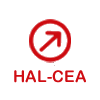Environmental degradation of nuclear materials: the use of advanced characterization techniques to understand physical and chemical phenomena
Résumé
The work presented during this HDR defense encompasses various metallic alloys used in the nuclear industry and issues they can encounter in reactor. The work is focused on a small selection of the issues linked to the environmental degradation of materials in reactor. For zirconium alloys, the focus of the work presented is corrosion and hydriding. Using a large array of characterization techniques, the corrosion of several zirconium alloys used as fuel claddings is studied and parameters incorporated in kinetic corrosion models are determined for unirradiated and irradiated material.
In many of the studies presented in this work, the impact of irradiation is investigated using ion-irradiation. This method presents many advantages such as avoiding activation of the material, being able to choose the irradiating particles and their energy and thus conduct separate effects studies in order to compare the impact of different parameters on the phenomenon of interest. Conducting such experiments requires the use of large user facilities such as Jannus for example which provide access through a proposal-based system. The disadvantage of ion-irradiation experiments is that the damage rate is usually much more important than that observed in reactor. In addition, the actual consequences of in-reactor operation are much more complex than those simulated by ion-irradiation. The irradiating particles are numerous and impact the chemistry and microstructure of the material in very complex ways.
Studies conducted on neutron-irradiated material include the hydride reorientation work performed on cladding irradiated in French and American PWRs and Swiss BWRs. The information extracted from these materials (mechanical properties, hydride microstructure) give data directly usable by the nuclear industry to predict the behavior of similar material in current reactors or already in spent fuel pools or dry storage casks.
Work on aluminum alloys in this study aims at understanding phenomena observed in radioactive materials, such as an increase of corrosion rate or pop-ins occurring during compact-tension specimens by using unirradiated materials as well as ion-irradiated materials and submitting these materials to detailed characterization. In this case as well, the use of user facilities such as synchrotrons to perform laminography for example is key to the understanding of the fracture mechanics of the studied aluminum.
The work performed on aluminum alloys also required characterization at very small scale since even the smallest particles can impact the mechanical behavior of large components. Analyses performed using an APT is used for these studies and it is clear that the complementarity between APT and TEM is key to study nanometer size clusters and chemical variations at very small scale.
Origine : Fichiers produits par l'(les) auteur(s)






